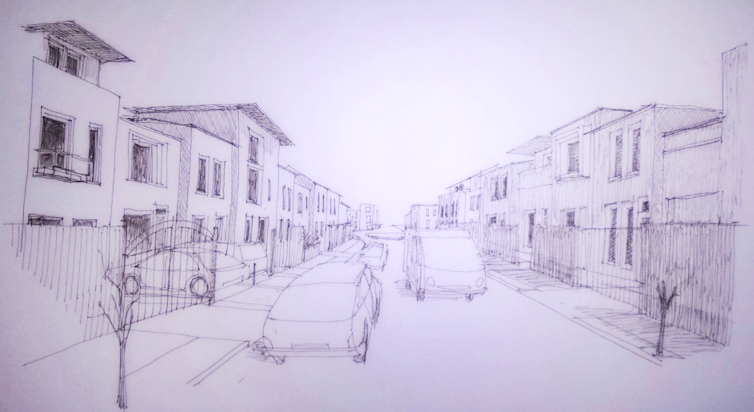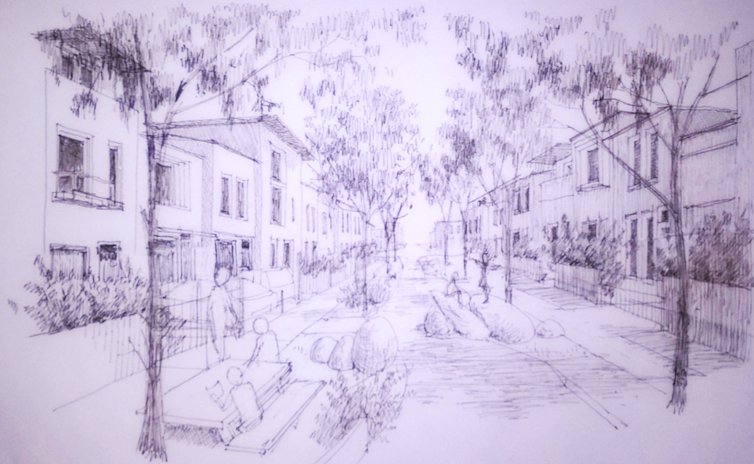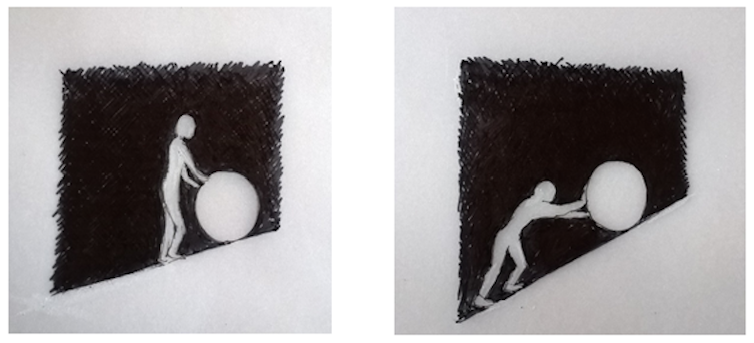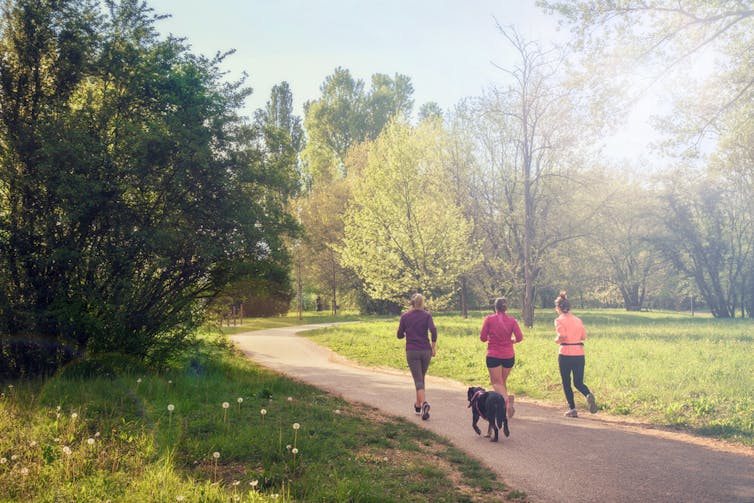Our urban environment doesn't only reflect poverty, it amplifies it
- Written by Jenny Donovan, Urban Designer and Sessional Lecturer, La Trobe University
The poorer you are, the harder it is to participate in and contribute to society. My experience as a practising urban designer and my research in the area have led me to conclude that the way people’s surroundings are designed reflects and amplifies this profound injustice.
Busy and fast roads, for instance, encourage driving while at the same time deterring walking and other forms of street life, isolating people from their neighbours.
Physical activity, interacting with others, setting and meeting challenges, and experiencing nature are all essential to our well-being. But humans aren’t good at prioritising our needs. We often make decisions that deny us these and other essential experiences.
This is particularly the case in poorer communities where shared and public spaces – the settings for many of these essential activities – tend to be poorly maintained, mundane and utilitarian.
Read more: Designing the compassionate city to overcome built-in biases and help us live better
Indifference without invitation
In such generic or inappropriately designed places, indifference or avoidance becomes more likely. Faced with the lukewarm appeal of these places, and sometimes active deterrence, people are more likely to be seduced by “easier”, but not needs-fulfilling, ways to spend their time. They may choose to drive rather than walk, or play on screens rather than in the open with others.
 Places like this offer little invitation to walk, play or exercise.
Jenny Donovan, Author provided
Places like this offer little invitation to walk, play or exercise.
Jenny Donovan, Author provided
If these people are to escape the call of the TV and computer, the “heavy lifting” will need to come from personal motivation to fill the gap left by the paucity of invitation from their surroundings.
In such places, if someone does choose to walk, cycle or play or participate in any of the activities that support health and well-being, they are doing so because they are determined to, rather than because their surroundings offer the pulling power to motivate them.
 Making the same street friendlier makes meeting needs easier and, for some people, possible.
Jenny Donovan, Author provided
Making the same street friendlier makes meeting needs easier and, for some people, possible.
Jenny Donovan, Author provided
Many people do somehow overcome even the most difficult circumstances and thrive. But many others find this prohibitively difficult or are unaware of the need to make different choices. Their surroundings lead them to inadequate physical activity, isolate them from others, limit potential to find like-minded people around which community can coalesce, offer little enjoyment of nature and few opportunities to set and meet self-determined challenges.
We can see the effects of these issues through increased rates of obesity, loneliness and many diseases that diminish people’s quality of life.
 A conducive environment helps people meet their needs, thrive and fulfil their potential.
Jenny Donovan, Author provided
A conducive environment helps people meet their needs, thrive and fulfil their potential.
Jenny Donovan, Author provided
Repeated over a neighbourhood or a city and concentrated in poorer areas, this can create arbitrary barriers that make winners and losers of their inhabitants. Extended over many years, these effects create huge social and health costs and can lock people into disadvantage.
Read more: Want to improve the nation's health? Start by reducing inequalities and improving living conditions
These places deny people the inspiration of the crowd. If you rarely see someone else play on the street, run or cycle, you are less likely to consider it among the choices open to you.
 You’re much less likely to go for a run if nobody else is doing it around you.
from shutterestock.com
You’re much less likely to go for a run if nobody else is doing it around you.
from shutterestock.com
Beyond the suburb
Disadvantaged communities lack the ability to influence the design process, make positive change happen themselves or protect what they value. Research has found people in communities with low socioeconomic status get left out of the decision-making process. When they do receive attention it is not as wholehearted or appropriately applied as it would be for wealthier communities.
We wear our surroundings like a cloak. Poor physical and social conditions often reflect poorly on their inhabitants, contributing to lower expectations of those people. This soft prejudice even means they are less likely to be considered for jobs that don’t match perceptions of what people from that postcode are like.
People with less buying power end up in less supportive environments, priced out of more nurturing places. Poorer people are getting pushed out of former working-class inner-city neighbourhoods that attract people and investment. This leaves less attractive places as the realm of concentrated poverty.
Read more: Look up #happycity and here's what you'll find
So, what can we do about it?
The obvious answer is to invest in design and the design process. But this is only part of the solution.
We need to reassess what good urban design is. Good design will need to be inexpensive to avoid lumbering communities with debt and ensure it can be spread widely. It needs to be tailored to provide the right invitations to those who most need it. It gives greater weight to designing for the social landscape of the community, and less to the aesthetic values of the designer and client.
Good design enables those who are being designed-for to participate in the design and creation of their surroundings wherever possible. This allows them the experience of developing and realising change, taking responsibility and exercising self-determination.
This takes time. The emotional capital this process demands of the designer and the community are immensely powerful but volatile resources. The designs that arise may not immediately be recognised by many designers as good design.
But if our present approach leaves people isolated and uninspired to do the things they need to do to thrive, we must reassess what good design really is and see it not as a luxury but as a right.
Authors: Jenny Donovan, Urban Designer and Sessional Lecturer, La Trobe University
Read more http://theconversation.com/our-urban-environment-doesnt-only-reflect-poverty-it-amplifies-it-98561



